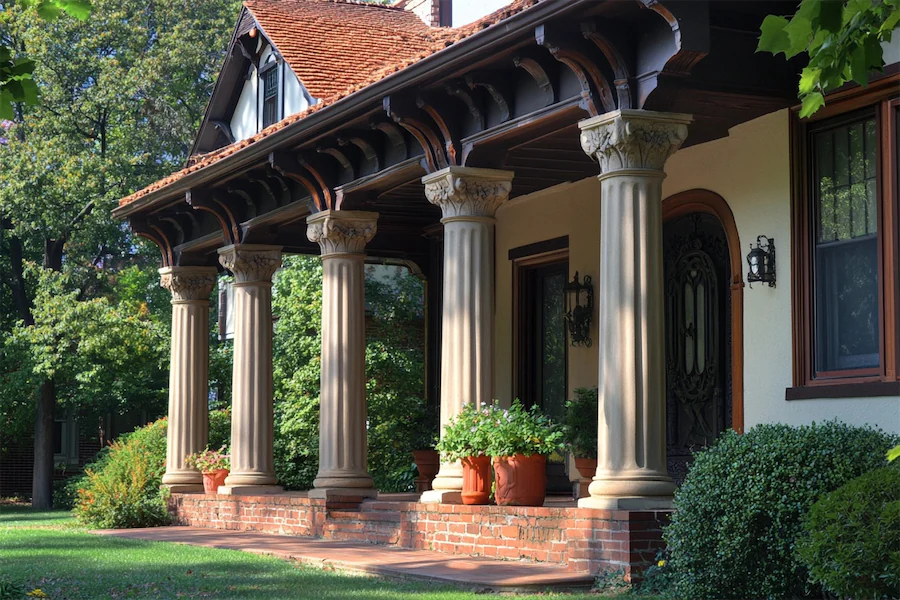Tudor Revival architecture, which gained popularity in the late 19th and early 20th centuries, draws inspiration from medieval English building traditions. This style is characterized by steeply pitched gable roofs, decorative half-timbering, and tall, narrow windows.
Introduction to Tudor Revival Columns
In Tudor Revival architecture, the use of columns is relatively restrained compared to other architectural styles. When present, columns are typically modest and serve functional roles, such as supporting porches or entryways. They often feature simple designs that complement the rustic and medieval aesthetic of the style.
History and Origins of Tudor Revival Columns
The Tudor Revival movement emerged as a romanticized interpretation of medieval English architecture, focusing on recreating the charm of rural cottages and manor houses. While original Tudor architecture did not prominently feature columns, the revival style occasionally incorporated them, adapting classical elements in a simplified manner to align with the overall aesthetic.
Key Features of Tudor Revival Columns
Tudor Revival columns, when utilized, exhibit several distinctive features:
- Material Choice: Columns are often constructed from wood or stone, materials that harmonize with the natural and handcrafted feel of Tudor Revival homes.
- Design Simplicity: Unlike the ornate columns of classical styles, Tudor Revival columns are typically unadorned, featuring straightforward designs that emphasize functionality.
- Structural Integration: Columns are commonly integrated into porch supports or as part of entryway designs, providing necessary support while maintaining the cohesive medieval-inspired appearance.
Applications of Tudor Revival Columns
Examples of Tudor Revival columns include:
- Porch Supports: Simple wooden or stone columns supporting small porches or overhangs at the entrance of the home, contributing to the inviting and rustic character of the facade.
- Entryway Accents: Columns flanking doorways, sometimes paired with arches or decorative brackets, enhancing the architectural interest of the entry without overwhelming the design.
Considerations When Designing Tudor Revival Columns
When incorporating columns into Tudor Revival architecture, it is essential to consider:
- Material Consistency: Selecting materials that match or complement the other architectural elements, such as timber framing or masonry, to ensure a unified appearance.
- Proportionality: Ensuring that the size and scale of the columns are appropriate for their functional role and do not detract from the characteristic features of the style.
- Historical Accuracy: While some adaptation is acceptable, maintaining fidelity to the traditional elements of Tudor architecture helps preserve the authenticity of the design.
Conclusion
While not a dominant feature, columns in Tudor Revival architecture serve subtle yet important roles in supporting structures and enhancing entryways. Their simple designs and natural materials contribute to the overall charm and historical ambiance of Tudor Revival homes, reflecting a thoughtful blend of functionality and aesthetic appeal.
